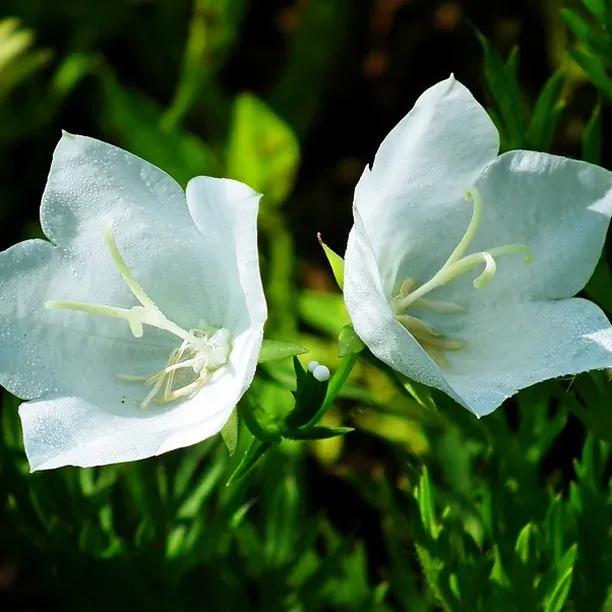White Bellflower Plants
Honest Delivery PricesClustered Bellflower
Pot Grown Herbaceous Perennials- Colour: White flowers
- Flowering: Jun-Aug
- Foliage: Mid-green
- Height x Spread: 90cm x 60m
- Position: Sun, partial shade
- Soil: Any with decent drainage
- RHS Plants for Pollinators
Recommended extras
Description
Campanula persicifolia 'Alba' - White Peach Leaf Bellflower Plants
For a shot of pure white in your summer borders, Campanula persicifolia 'Alba', the white peach-leaved bellflower plant churns out flowers on upright stems from June to August.
An absolute classic in the herbaceous border, you'll be hard-pressed to choose another plant that complements so many others.
Browse all of our perennial plants.
Features
- Colour: White flowers
- Flowering: Jun-Aug
- Foliage: Mid-green
- Height x Spread: 90cm x 60m
- Position: Sun, partial shade
- Soil: Any with decent drainage
- RHS Plants for Pollinators
Great In Your Garden...
Ideal for any informal cottage garden style, which demand a lot of white flowers to go with all the pastel-y pinks.
Pair it with geraniums and delphiniums to flower together. Later-blooming, perennial anemones will take over the show when the campanula's flowers start to fade.
Campanulas are really useful for under-planting large roses and shrubs, as they hide the 'bare ankles' of the bigger plants, which are certainly not the best part of their display!
Growing Campanula
It spreads by means of rhizomes (a rooting underground stem), so whenever it starts to crowd out its neighbours, divide your plants in spring by cutting across rootball with a sharp spade, then removing up to about a third of it while leaving the rest in place: this is easier than digging up the whole thing and less stressful for the portion that remains.
Campanula will grow in any well drained soil and really thrives on alkaline, chalky soil, where it teams up beautifully with Echinacea, Rudbeckia, lavender and herbs like rosemary, bay and fennel.
Did You Know...
Solitary harebell carpenter bees and mining bees collect pollen from Campanulas, and may shelter in the flowers overnight.
Planting Instructions
Plant in sun or partial shade in loam, chalk or alkaline and neutral soils, moist but well-drained. Add organic matter when planting, 1m apart. Water well until established and during dry spells. Feed with an all-purpose general fertiliser in spring. No need to stake. Divide overcrowded plants in spring. Protect against slugs, snails and aphids.


